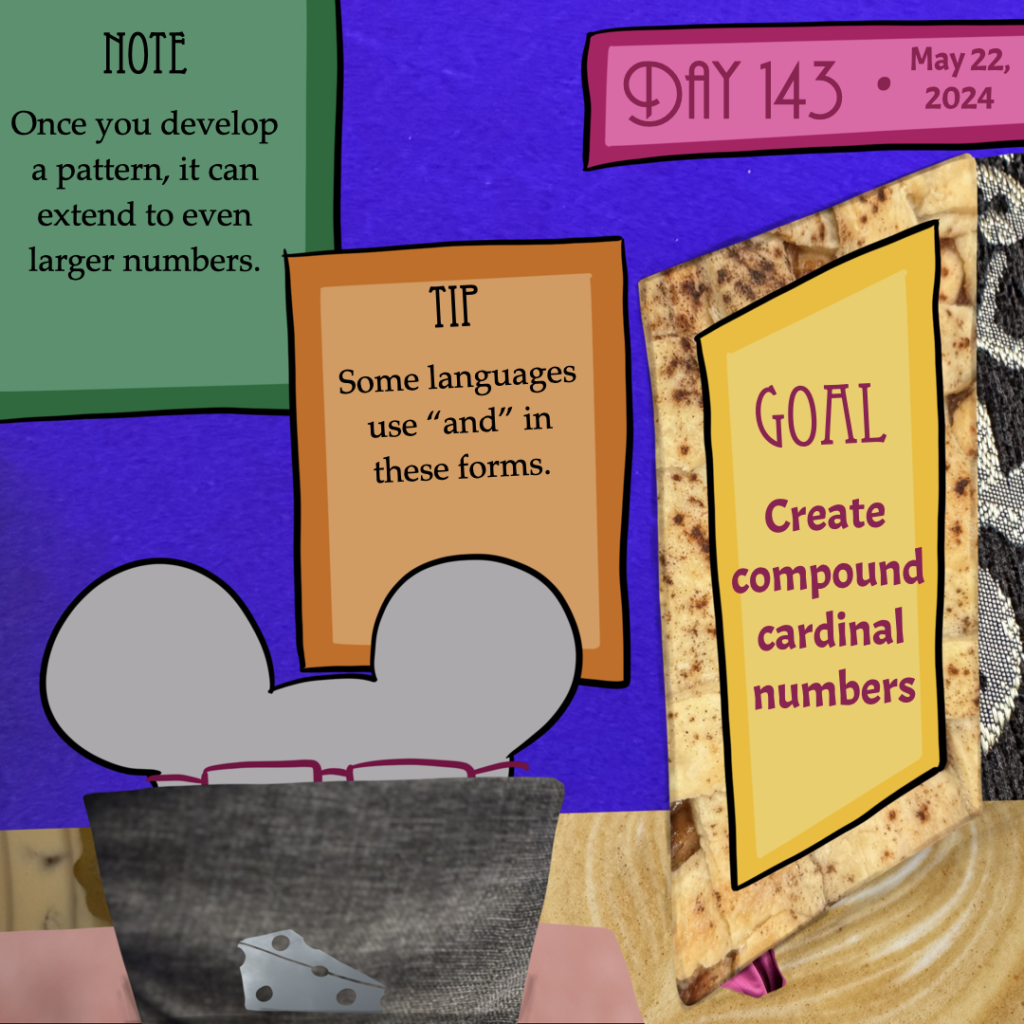
Goal: Create compound cardinal numbers
Note: Once you develop a pattern, it can extend to even larger numbers.
Tip: Some languages use “and” in these forms.
Work focus: Create/Make/List
Beyond basic roots of cardinal numbers, you can combine forms to create larger numbers, such as the compound “three-ten” to mean “13” or “four-tens” to mean “40.” The use of the form “ten” mean those examples are in a base-10 system, but the concept is the same for any other base. Whatever your version of “10” is in your language—the point where your counting starts over—can be the basis of a compound form for larger numbers.
For instance, in a base-7 system, the form to indicate there are fourteen objects you are counting might be “two-sevens.” If you chose a non-base-10 system and are struggling with understanding conceptually how to make number forms and know what amount they are referring to, I encourage you to use an online base converter to help you out. Just make sure you’re converting numbers in the right direction!
Once you know what patterns you want to use for making larger numbers, they can be consistently applied to figure out how to say any larger form. For instance, if you’ve planned out how your language says “forty-seven” (which might be “seven and four tens”), then you can use the same logic to say “58” or “63” or “99.” If you want to consider numbers higher than that, then you may also want to create a form that means “hundred” or even “thousand” to fill out your cardinal numbers.
